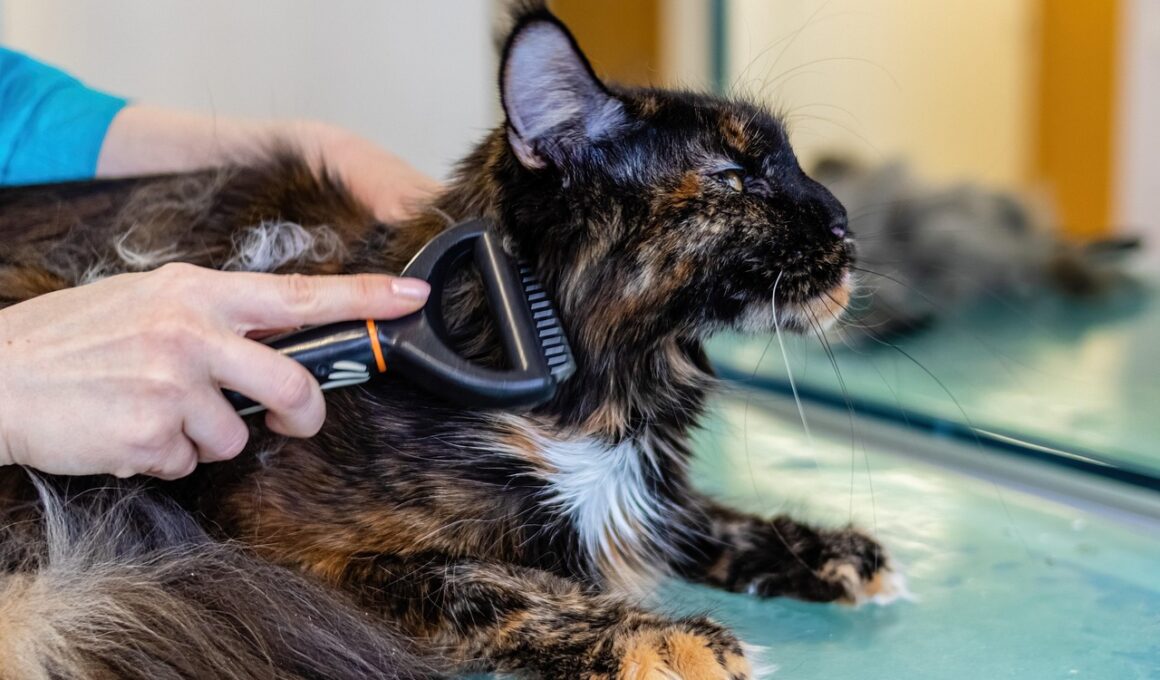Understanding the Importance of Nail Care in Cat Grooming and Skin Health
Maintaining a cat’s nail health is a crucial part of grooming that extends beyond aesthetics. Regular nail care helps to prevent potential health hazards associated with overgrown nails. Cats have retractable claws that, if not trimmed, may become a source of pain or discomfort. Overgrown claws can lead to cracked or broken nails, which can cause infection and other complications. In addition, unhealthy nails can affect a cat’s ability to walk properly, leading to other issues such as joint problems. It’s important to create a regular grooming schedule that includes nail trimming at least every few weeks. This ensures that the claws are kept at an appropriate length. Adjustable nail clippers specifically for cats can make the process easier and safer. Using these clippers can help ensure that you don’t accidentally cut too short, which may hurt the cat. Moreover, nail care is an opportunity to bond with your cat. Regular handling of their paws can help them grow accustomed to being touched in that manner, reducing anxiety during future grooming sessions. Ultimately, nail care is essential for both health and well-being.
How Nail Care Affects Cat Skin Health
The health of a cat’s skin is often linked closely to nail care. Neglecting their nails can have repercussions on their skin, especially if a cat attempts to scratch itself with overgrown nails, risking injuries. These injuries can become breeding grounds for bacterial infections if they break the skin. Keeping nails trimmed helps to avoid these risks. Regular grooming facilitates not only the maintenance of nails but also enhances the overall skin health of cats. This grooming routine allows for the early detection of skin issues, such as rashes or parasites, that may not be easily visible otherwise. Additionally, proper nail maintenance reduces the likelihood of cats scratching furniture and other surfaces, thus minimizing negative behaviors. A gentle yet firm approach while grooming fosters a sense of trust between the pet and owner. Using gentle products, like cat-safe moisturizers, can also help maintain skin hydration. Adequate hydration is essential for skin elasticity and overall cat comfort. Owners should be observant of their cat’s habits, ensuring that their grooming routine supports both nail and skin health effectively.
Another vital aspect of nail care is the prevention of behavioral issues. Cats naturally have the instinct to scratch to keep their claws sharp and healthy. However, when they cannot do this naturally due to long nails, it can lead to behavioral problems. Trimming their nails regularly not only promotes hygiene but also minimizes the tendency for cats to over-scratch furniture and other items around the home. Aside from a typical scratching post, which can assist in keeping claws healthy, providing a variety of textured surfaces can keep a cat entertained while maintaining their nail health. Additionally, nail caps are available as an option for some owners who may struggle with traditional clipping. These caps can help prevent scratching accidents, protecting both the cat and the furniture. Ensuring a comfortable environment with scratch-friendly surfaces and toys can make the grooming process less stressful. Implementing these strategies ensures that grooming is a holistic routine that encompasses nail health, skin health, and overall well-being. This proactive approach contributes to a happier, healthier feline companion. Regular communication with your veterinarian can provide more personalized advice on nail care.
Signs of Nail and Skin Issues in Cats
Being attentive to the signs that may indicate problems with your cat’s nails or skin is essential. Regular inspections of the paws will help identify issues early. Look for signs such as changes in the color of the nails, excessive shedding, or redness in the skin around the nails. If you notice your cat limping or avoiding putting weight on a paw, this may signal that their nails are causing discomfort. Scratching excessively or rubbing their paws on surfaces can indicate an underlying issue that requires your attention. In some cases, you may also find areas of missing fur surrounding the paws, indicating a potential skin problem or allergy. As part of regular grooming, check for any abnormalities in their skin texture. Lumps, bumps, or unusual odors are key indicators that something could be amiss. Consulting with your veterinarian promptly upon noticing these signs can lead to early diagnosis and treatment. Quick intervention is essential to prevent further complications. Create a comprehensive care routine that prioritizes inspection and grooming, which will enhance your cat’s quality of life significantly.
It is essential to incorporate products that cater specifically to feline health during nail care routines. Utilizing cat-specific grooming tools can greatly improve the efficiency and safety of nail trimming. For instance, a quality cat nail clipper uses appropriate angles and sizes to comfortably fit in your hand while trimming without causing stress. At times, owners may opt for alternatives such as electric trimmers. These devices can provide a smooth and gentle way to keep nails in check, though some cats may take time to acclimatize to their use. Whatever method is chosen, it’s key that the owner remains calm and patient, offering treats as encouragement. Alongside physical care, mental stimulation is equally beneficial for cats during grooming sessions. Engaging them with toys or treats can create positive associations, making future trimming easier. Regular trims can lead to a more relaxed pet, reducing the likelihood of anxiety during grooming. Each trimming session can help measure progress, fostering a sense of achievement for both the cat and the owner. Ultimately, the goal is to create a stress-free experience, contributing to a loving bond between the cat and its caregiver.
Using Professional Grooming Services
While many owners opt for at-home care of their cat’s nails, professional grooming services can be an excellent option, especially in certain circumstances. A professional groomer has experience and the specialized tools required for safe nail trimming and skin care. They also offer the benefit of being familiar with how to handle different breeds and temperaments, mitigating risks associated with grooming sessions. Groomers can provide additional services such as checking for skin conditions and even educating owners on best practices for at-home care. The grooming environment is typically set up for minimal stress, further ensuring a positive experience for the cat. Owners may find this especially valuable if their cat is particularly anxious or aggressive about nail clipping. After a professional grooming session, tracking changes in behavior or observing any physical improvement can help tailor ongoing grooming strategies. Additionally, it encourages owners to commit to regular grooming, whether professional or at-home. It’s advisable to establish a grooming schedule every one to three months for optimal nail care and skin health. Strong communication with the groomer is crucial for tailored recommendations.
The relationship between nail care and cat skin health cannot be overstated. Regular attention to nails and grooming enhances a cat’s quality of life significantly. It serves as a preventive measure against numerous health issues both physically and emotionally for a cat. When owners engage in consistent grooming, they are not just maintaining hygiene but also reinforcing the bond with their feline friend. Cats thrive on routine, and incorporating regular grooming sessions establishes a comfortable pattern. Over time, cats become accustomed to the process, making the experience more manageable for both cat and owner. Remember that a good grooming regime promotes early detection of any skin or nail-related issues, allowing for timely action. This approach supports ongoing overall health that mirrors a happy and content living environment. Owners are encouraged to seek resources, whether through veterinarians or grooming professionals to enhance their knowledge base. A well-informed caregiver can make a substantial difference in their cat’s well-being. Invest time and effort in learning about proper care methods for nails and skin, ensuring a healthier and happier pet. Building a partnership with your cat through care fosters love and companionship that both parties cherish.


